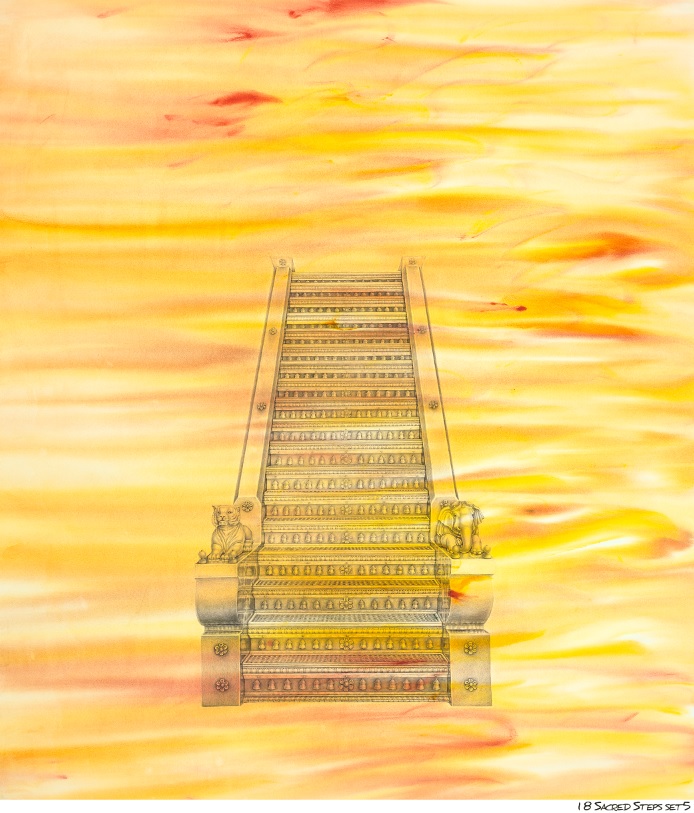By Tricia Haggerty Wenz
Christa Whitten is the final artist whose work will be showcased on HPL’s ArtWalk for the 2021-22 season. Her exhibition “Gateways to Places We’re Told We Cannot Go” focuses on the partial or completely restricted access to powerful, spiritually charged locations around the globe. Although denial of access can be based on a variety of factors, this show addresses restrictions which involve gender. Some sites ban women (or, less frequently, men) outright, while others institute conditional limitations, such as nonaccess during menstruation.
“Gateways to Places We’re Told We Cannot Go” will open with a reception on Friday, July 15th, from 5:30-7:30 p.m. at the Downtown Library, 500 Main St. The works will be on display through Saturday, August 27th.
The following interview was edited for length and clarity.
Tell me about the origins of this intriguing exhibit.
The idea came in 2018 when I was working on a different series and was looking at changing up the style of my art. I began exploring pushing the medium to whatever the next phase of my development was going to be and I came across an image of a pagoda (sacred temple or building, typically a many-tiered tower, in India and East Asia) that I never saw before. It was an aesthetically beautiful image that sparked a deep curiosity in me to learn more. I discovered it was in Myanmar and consequently I discovered that women were not allow to interact with the pagoda. Only men had that privilege.
Wow.
Yes. I began seeking more and more information and discovered this was way more prevalent throughout the world than I had anticipated. There are many sacred spaces that women are denied access to.
How did this knowledge shape the work you created?
I wanted my work to feel ethereal with the abstract part creating a space that is not easily defined while at the same time highlighting the detailed image. I used lush colors while creating an intentional connection between the background and the image I created of the pagoda. It was my intentions to create a sense of place within my work.
What is your process like?
Producing my art is a meditative practice for me. I tap into my energy and my own interior landscape to create my work. The paring of color choices, brush style, mood — it is all important and very intentional for me.
How has creating this body of work changed your art practice?
This experience has opened to going beyond two-dimensional work and to experiment more with objects and with sculpture in a nontraditional sense. I discovered I can be more expressive and can create work that speaks for itself and can be interactive with the viewer. This discovery has been an absolute delight for me.
What would you like the viewer to experience when seeing Gateways to Places We’re Told We Cannot Go.
It would be great if the viewer thinks about how patriarchy has influenced the way woman experience sacred spaces in our world. A long time ago women were once viewed as the receptacles of the divine and the embodiment of the spirit. It was understood that women had this deep connective power to the spiritual world. And yet now there is this restrictive approach to important sacred spaces in our world. Why have we allowed society to limit how women can live fully spiritual connected lives? I really hope that my exhibit can have the viewer think about these questions and open up these important conversations for the viewers.
What’s next for you?
I am going to take a breath. While there are already a few projects coming across my desk I am going to take a breath. That is what I am going to do next. Breathe.

